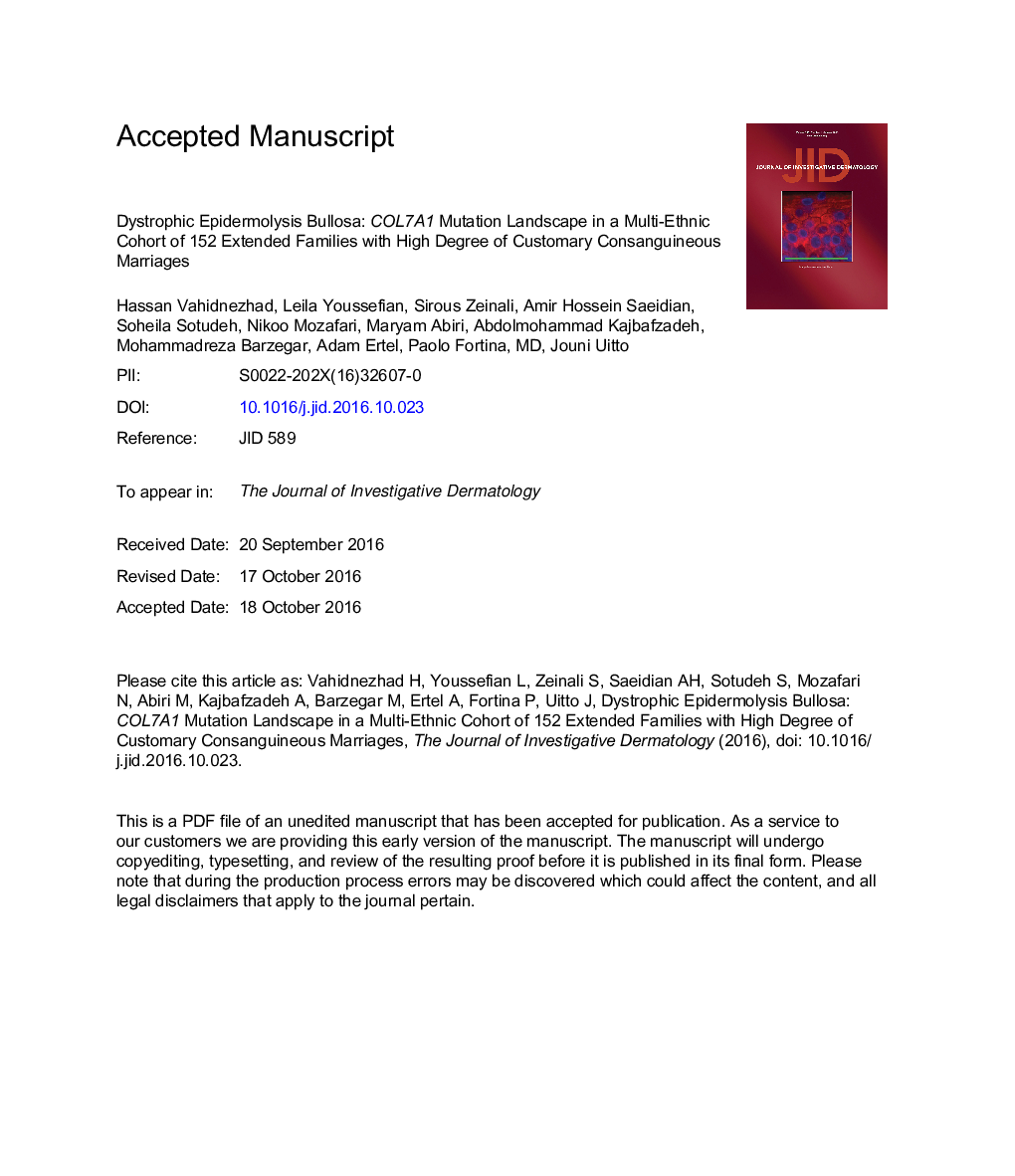| Article ID | Journal | Published Year | Pages | File Type |
|---|---|---|---|---|
| 5649741 | Journal of Investigative Dermatology | 2017 | 31 Pages |
Abstract
Dystrophic epidermolysis bullosa is a heritable skin disease manifesting with sub-lamina densa blistering, erosions, and chronic ulcers. COL7A1, encoding type VII collagen, has been identified as the candidate gene for dystrophic epidermolysis bullosa. In this study, we have identified COL7A1 mutations in a large multi-ethnic cohort of 152 extended Iranian families with high degree of consanguinity. The patients were diagnosed by clinical manifestations, histopathology, and immunoepitope mapping. Mutation detection consisted of a combination of single nucleotide polymorphism-based whole-genome homozygosity mapping, Sanger sequencing, and gene-targeted next-generation sequencing. A total of 104 distinct mutations in COL7A1 were identified in 149 of 152 families (98%), 56 (53%) of them being previously unreported. Ninety percent of these mutations were homozygous recessive, reflecting consanguinity in these families. Three recurrent mutations were identified in five or more families, and haplotype analysis suggested a founder effect in two of them. In conclusion, COL7A1 harbored mutations in the overwhelming majority of patients with dystrophic epidermolysis bullosa, and most of them in this Iranian cohort were consistent with autosomal recessive inheritance. The mutation profile attests to the impact of consanguinity in these families.
Keywords
Related Topics
Health Sciences
Medicine and Dentistry
Dermatology
Authors
Hassan Vahidnezhad, Leila Youssefian, Sirous Zeinali, Amir Hossein Saeidian, Soheila Sotoudeh, Nikoo Mozafari, Maryam Abiri, Abdol-Mohammad Kajbafzadeh, Mohammadreza Barzegar, Adam Ertel, Paolo Fortina, Jouni Uitto,
